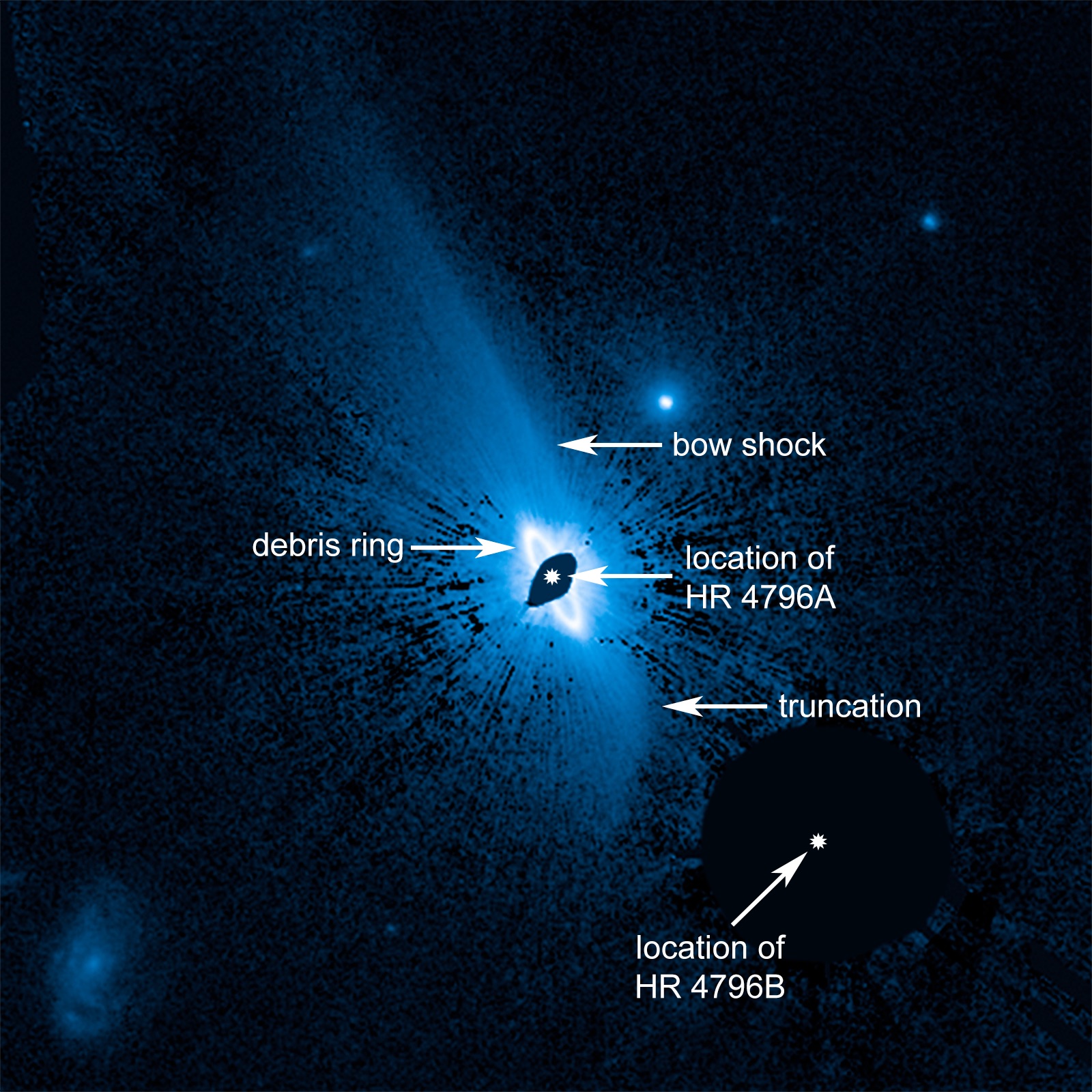Giant Alien Planet May Lurk Inside Star's Lopsided Dust Structure

The Hubble Space Telescope recently discovered a star surrounded by a huge dust structure that stretches about 150 billion miles across.
Scientists suspect that a giant planet is also embedded inside of the debris, and so the structure could shed insights into how planets are formed, NASA officials said in a statement.
"The debris field of very fine dust was likely created from collisions among developing infant planets near the star, evidenced by a bright ring of dusty debris seen seven billion miles [11 billion kilometers] from the star. The pressure of starlight from the star, which is 23 times more luminous than the sun, then expelled the dust far into space," NASA officials said in the statement. [In Pictures: The Strangest Alien Planets We've Found So Far]
But there are strange subtleties to the dust ring's structure. NASA describes it as looking like an inner tube that got hit by a truck. That's because the dust is much more extended on one side of the star than it is on the other side. Perhaps, scientists suggest, the host star is plowing through the gas that makes up the interstellar medium, creating a shock wave that is affecting the dust. Or, the star's red dwarf binary companion, HR 4796B — which is roughly 54 billion miles (87 billion km) away — is exerting a tidal influence.
"The dust distribution is a telltale sign of how dynamically interactive the inner system containing the ring is," stated lead researcher and astronomer Glenn Schneider of the University of Arizona, Tucson. He used Hubble's Space Telescope Imaging Spectrograph to examine the dust in more detail.
"We cannot treat exoplanetary debris systems as simply being in isolation," he added. "Environmental effects, such as interactions with the interstellar medium and forces due to stellar companions, may have long-term implications for the evolution of such systems. The gross asymmetries of the outer dust field are telling us there are a lot of forces in play — beyond just host-star radiation pressure — that are moving the material around. We've seen effects like this in a few other systems, but here's a case where we see a bunch of things going on at once."
About 40 debris disks have been photographed around stars to date, mostly through Hubble observations. Evidence of the first debris disk around a star (Beta Pictoris) was discovered in 1983, using NASA's Infrared Astronomical Satellite. In 2015, NASA officials said Beta Pictoris was the only known system that has a gas giant planet embedded in the dust.
Get the Space.com Newsletter
Breaking space news, the latest updates on rocket launches, skywatching events and more!
The new work was detailed in The Astronomical Journal in February.
Follow us @Spacedotcom, Facebook and Google+. Original article on Space.com.
Join our Space Forums to keep talking space on the latest missions, night sky and more! And if you have a news tip, correction or comment, let us know at: community@space.com.

Elizabeth Howell (she/her), Ph.D., was a staff writer in the spaceflight channel between 2022 and 2024 specializing in Canadian space news. She was contributing writer for Space.com for 10 years from 2012 to 2024. Elizabeth's reporting includes multiple exclusives with the White House, leading world coverage about a lost-and-found space tomato on the International Space Station, witnessing five human spaceflight launches on two continents, flying parabolic, working inside a spacesuit, and participating in a simulated Mars mission. Her latest book, "Why Am I Taller?" (ECW Press, 2022) is co-written with astronaut Dave Williams.









